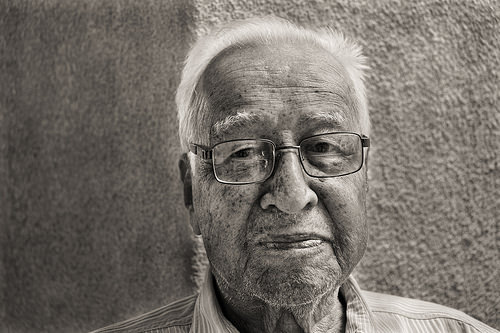
National Elder Abuse Awareness Day
An Estimated 5 Million Older Americans Suffer Abuse Each Year
June 15 is National Elder Abuse Awareness Day. Every year, an estimated 5 million older Americans are victims of elder abuse, neglect, or exploitation. Studies have suggested that for every case of elder abuse or neglect reported; as many as 23 cases go unreported. Often, victims of elder abuse are residents of assisted living facilities or nursing homes, but elder abuse can happen anywhere.
According to a WISN-TV report, the number of abuses is shockingly high, with 1 in 6 elderly women as victims of elder abuse.
This could continue to be a growing situation for rescue missions to be aware of, as there is a clear upward trend in the proportion of older persons (aged 50-64) among the homeless population. According to the National Coalition for the Homeless, this is a group that frequently falls between the cracks of governmental safety nets. They are not old enough to qualify for Medicare so when their physical health is assaulted by poor nutrition and severe living conditions, it may eventually resemble that of someone much older. AGRM’s most recent Snapshot Survey bears this out, showing that 42 percent of those being served by missions are age 46–65; numbers drop sharply after age 65—the age when a number of government-provided benefits kick in.
The first step to understanding elder abuse is recognizing these abuses when they happen, and to actively respond with preventative solutions. Elder abuse in care facilities can come in many forms:
Physical/Sexual Abuse. The nonaccidental use of force against an elderly person is considered physical abuse. Extreme force can cause pain and ultimately death, if injuries due to said force are untreated. Physical abuse can also include the inappropriate use of medication to incapacitate a resident. Sexual abuse is not restricted to physical touching. Signs may include inadequately explained fractures, bruises, welts, cuts, sores or burns, or unexplained sexually transmitted diseases.
Neglect. Mistreatment of an elderly person that results in any type of harm can be considered neglect. This usually includes the failure to provide basic needs for the resident. Signs include lack of basic hygiene and medical aids (glasses, walker, teeth, hearing aid, and medications,) unsupervised residents with mental disabilities in care facilities, and unsuitable living conditions.
Psychological/Emotional Abuse. The manner in which elderly residents are spoken to while in the care of others can cause a lasting impact. Passive emotional abuse can be unintentional, but the effects are extremely damaging. Signs include unexplained or changed behavior or alertness, or withdrawal from normal activities. A caregiver may also isolate the elder, become verbally aggressive, demeaning, controlling, or simply uncompassionate.
Financial Exploitation. One of the more common forms of elder abuse is financial manipulation. Exploitation often comes in the form of a slow depletion of savings via nonexistent fees or charges for nondelivered services. In care facilities, signs of healthcare fraud and exploitation can include a failure to provide lack of affordable amenities, the elderly individual “voluntarily” giving uncharacteristically excessive financial reimbursement/gifts while unable to comprehend its meaning.
Prevent Elder Abuse:
- Look for the red flags that may suggest elder abuse and neglect.
- Call or visit an elderly loved one and ask how he or she is doing.
- Provide a respite break for a caregiver.
- Contact your local adult protective services or long-term care ombudsman (an official appointed to investigate individuals' complaints against maladministration) to learn how to help at-risk elders and adults with disabilities.
Photo: INSIDE THE IMAGE via photopin (license)